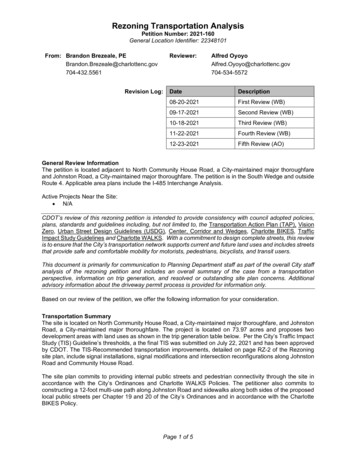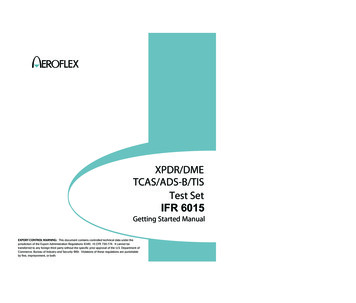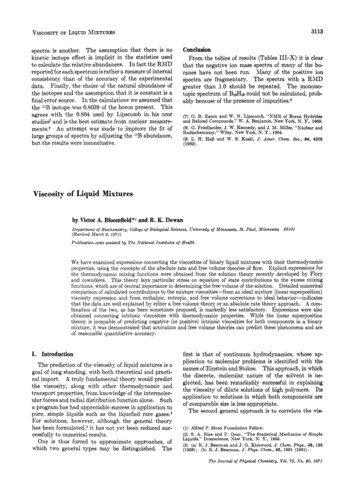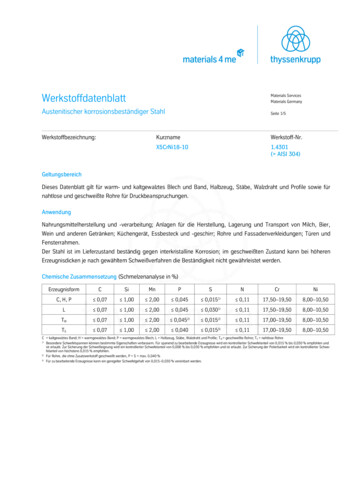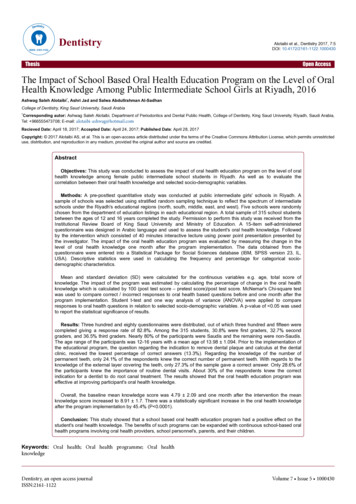
Transcription
tistDen ryDentistryISSN: 2161-1122Alotaibi et al., Dentistry 2017, 7:5DOI: 10.4172/2161-1122.1000430ThesisOpen AccessThe Impact of School Based Oral Health Education Program on the Level of OralHealth Knowledge Among Public Intermediate School Girls at Riyadh, 2016Ashwag Saleh Alotaibi*, Ashri Jad and Salwa Abdullrahman Al-SadhanCollege of Dentistry, King Saud University, Saudi Arabia*Corresponding autor: Ashwag Saleh Alotaibi, Department of Periodontics and Dental Public Health, College of Dentistry, King Saud University, Riyadh, Saudi Arabia,Tel: 966555473708; E-mail: alotaibi-ashwag@hotmail.comRecieved Date: April 18, 2017; Accepted Date: April 24, 2017; Published Date: April 28, 2017Copyright: 2017 Alotaibi AS, et al. This is an open-access article distributed under the terms of the Creative Commons Attribution License, which permits unrestricteduse, distribution, and reproduction in any medium, provided the original author and source are credited.AbstractObjectives: This study was conducted to assess the impact of oral health education program on the level of oralhealth knowledge among female public intermediate school students in Riyadh. As well as to evaluate thecorrelation between their oral health knowledge and selected socio-demographic variables.Methods: A pre-posttest quantitative study was conducted at public intermediate girls' schools in Riyadh. Asample of schools was selected using stratified random sampling technique to reflect the spectrum of intermediateschools under the Riyadh's educational regions (north, south, middle, east, and west). Five schools were randomlychosen from the department of education listings in each educational region. A total sample of 315 school studentsbetween the ages of 12 and 16 years completed the study. Permission to perform this study was received from theInstitutional Review Board of King Saud University and Ministry of Education. A 15-item self-administeredquestionnaire was designed in Arabic language and used to assess the student's oral health knowledge. Followedby the intervention which consisted of 40 minutes interactive lecture using power point presentation presented bythe investigator. The impact of the oral health education program was evaluated by measuring the change in thelevel of oral health knowledge one month after the program implementation. The data obtained from thequestionnaire were entered into a Statistical Package for Social Sciences database (IBM, SPSS version 23, IL,USA). Descriptive statistics were used in calculating the frequency and percentage for categorical sociodemographic characteristics.Mean and standard deviation (SD) were calculated for the continuous variables e.g. age, total score ofknowledge. The impact of the program was estimated by calculating the percentage of change in the oral healthknowledge which is calculated by 100 (post test score – pretest score)/post test score. McNemar's Chi-square testwas used to compare correct / incorrect responses to oral health based questions before and one month after theprogram implementation. Student t-test and one way analysis of variance (ANOVA) were applied to compareresponses to oral health questions in relation to selected socio-demographic variables. A p-value of 0.05 was usedto report the statistical significance of results.Results: Three hundred and eighty questionnaires were distributed, out of which three hundred and fifteen werecompleted giving a response rate of 82.8%. Among the 315 students, 30.8% were first graders, 32.7% secondgraders, and 36.5% third graders. Nearly 80% of the participants were Saudis and the remaining were non-Saudis.The age range of the participants was 12-16 years with a mean age of 13.98 1.094. Prior to the implementation ofthe educational program, the question regarding the indication to remove dental plaque and calculus at the dentalclinic, received the lowest percentage of correct answers (13.3%). Regarding the knowledge of the number ofpermanent teeth, only 24.1% of the respondents knew the correct number of permanent teeth. With regards to theknowledge of the external layer covering the teeth, only 27.3% of the sample gave a correct answer. Only 28.6% ofthe participants knew the importance of routine dental visits. About 30% of the respondents knew the correctindication for a dentist to do root canal treatment. The results showed that the oral health education program waseffective at improving participant's oral health knowledge.Overall, the baseline mean knowledge score was 4.79 2.09 and one month after the intervention the meanknowledge score increased to 8.91 1.7. There was a statistically significant increase in the oral health knowledgeafter the program implementation by 45.4% (P 0.0001).Conclusion: This study showed that a school based oral health education program had a positive effect on thestudent's oral health knowledge. The benefits of such programs can be expanded with continuous school-based oralhealth programs involving oral health providers, school personnel's, parents, and their children.Keywords: Oral health; Oral health programme; Oral healthknowledgeDentistry, an open access journalISSN:2161-1122Volume 7 Issue 5 1000430
Citation:Alotaibi AS, Jad A, Al-Sadhan AS (2017) The Impact of School Based Oral Health Education Program on the Level of Oral HealthKnowledge Among Public Intermediate School Girls at Riyadh, 2016. Dentistry 7: 430. doi:10.4172/2161-1122.1000430Page 2 of 11IntroductionOral healthHealth is a common theme in most cultures and is a fundamentalhuman right without distinction of race, religion, and political belief,economic and social condition [1]. Oral health is a standard of healthof the oral and related tissues that enables an individual to eat, speakand socialize without active disease, discomfort or embarrassment andcontributes to the general well-being. It is concerned with maintainingthe health of craniofacial complex, the teeth and gums, as well as thetissue of the face and head that surrounds the mouth [2].Dental cariesOral diseases are common in many societies globally, with dentalcaries (DC) being the most prevalent chronic disease among children[3]. Low-income, middle-income and high-income countries, areaffected by DC. It affects between 60% and 90% of children inindustrialized countries [4].The United States Surgeon General reporton oral health stated that oral health problems are five times morelikely to occur in children than asthma and seven times more than hayfever [5]. DC is an infectious disease that can affect infants, children,adults and elderly. DC can result in the inflammation of dental pulpand associated tissues which can ultimately lead to tooth loss, cellulitisand rarely to brain abscess [6]. Oral streptococci the causative bacteriaof DC is known to be associated with systemic diseases such asendocarditis, meningitis, hepatic disease, and vertebral osteomyelitis[7]. DC is a debilitating condition that can cause a child to suffer asignificant degree of pain [8]. If left untreated the disease may lead tofurther complications including sepsis [9]. Severe untreated caries hasalso been found to have links to general health and well-being,affecting young children’s body weight and growth [10]. DC is painful,expensive to treat, and can harm the nutrition and overall health of achild.It is particularly critical because even following repair, destroyedtooth structure exhibits increased vulnerability [10]. Furthermore,poor oral health impacts children’s development. Toddlers may exhibitpoor growth and nutrition when chewing is painful. Older childrenmay miss school days or be distracted due to dental pain. Young peoplemay interact less with their peers and society when they areuncomfortable or embarrassed by the appearance of their teeth [11].The effects of DC on growth and physical, social/emotional, andcognitive development have implications on success and productivitythroughout life [12]. DC occurs as a result of a complex interplay ofsocial, cultural, behavioral, dietary and biological risk factors. Poor oralhygiene, high magnitude of cariogenic microorganisms, reduced saliva,inadequate exposure to fluoride, low socioeconomic status, andimproper feeding habits in infants are risk factors for DC [13]. Inchildren, the consumption of sugar containing food, socioeconomicstatus and poor perception about oral health of the mother are stronglyassociated with dental caries [14]. Dental caries, though preventable, isthe most prevalent oral condition which can have huge public healthimpact on the oral and systemic health, social well-being, income ofindividuals and health care systems [15]. Additionally, good oral healthis important in terms of the psychosocial factors which relate to qualityof life and optimum social functioning including self-expression andcommunication [16]. The prevalence of dental caries has shown adramatic decline over the past decades among children andadolescents in developed countries [17]. This reduction may beattributed to several factors such as improved oral hygiene practices,Dentistry, an open access journalISSN:2161-1122effective use of fluorides, modification of dietary habits andconsumption of sweets as well as the establishment of school-basedpreventive oral care programs [17]. In contrast, increased levels of DCwere reported in some developing countries particularly thosecountries which have not established any preventive dental programs[18]. Of the oral health behaviors, regular tooth brushing withfluoridated toothpaste at least two times a day is the most important,together with the use of the dental floss once daily to cleaninterproximal surfaces. Reduction of the consumption of sweets, andregular visits to dentist twice a year are essentials for preventing DCand maintaining optimum oral health [19]. During the adolescentyears, young individuals learn and acquire health related attitudes andbehaviors that continue with them into their adulthood. It was foundthat relatively stable patterns of tooth brushing and dietary behaviorsare usually established during the childhood and adolescence period[20].Global burden of dental cariesData collected from the National Health and Nutrition ExaminationSurvey (1999-2004) in the United States showed that about 28% ofchildren 2-5 years had DC in primary teeth while about 51% ofchildren aged 6-11 years had DC in primary teeth, and 21% of themhad DC in their permanent teeth [21]. A cross-sectional studycomprising a sample of 2014 preschool Chinese children aged 3-5years reported DC prevalence of 55% among them [22]. Similarly, astudy involving 1487 children ages from birth - 5 years in SouthernBrazil showed that 40% of preschoolers had DC in their primary teeth[23]. A nationwide health survey conducted in 2002-2003 in Indiafound that about 52% of 5-year-old children had DC, while 54% of the12 year olds and 63% of the 15 year olds of adolescents had DC [24]. Astudy conducted among a sample of high school students, found theprevalence of DC in Qazvin, Iran to be 75.5% [25]. Nibras and hiscolleagues found DC prevalence to be 62% among 12-year-oldschoolchildren in Baghdad, Iraq [26]. The prevalence of DC among12-14 year old children in Qatar was found to be 85% [27].Dental caries in Saudi ArabiaIn Saudi Arabia, dental caries rates are increasing with time. AlSekait and Al-Nasser examined a sample of 7040 primary schoolchildren from urban and rural schools in Riyadh, revealing a dentalcaries prevalence of 52% and a Decayed-Missed-Filled-Teeth (DMFT)index score of 2.0 [28]. Akpata and Al-Shammery examined all 12 and13 year old students in 10 randomly selected Riyadh schools (5 boys’schools and 5 girls’ schools) and found that the dental cariesprevalence was between 55.5% (for 13-year-old boys) and 73.1% (for12-year-old girls) [29]. A study was conducted in 1999 to assess thedental caries prevalence among 12-13 year old children in 10 of the 13administrative regions in Saudi Arabia. The investigators randomlyselected schools stratified by municipality and socioeconomic statusand assessed random classes of students. The study found that theprevalence of dental caries was 74% in urban areas and 67% in ruralareas, and there was a statistically significant difference between them(P 0.01) [30]. Wyne also studied the occurrence of DC among 12-13year old students and 18-19 year old students in randomly selectedprimary and intermediate schools in Riyadh. The dental cariesprevalence was found to be 90.5% for the 12-13 year old students and90.9% for the 15-19 year old students [31]. Around the same time, AlDosari and his team evaluated the dental caries prevalence in Riyadhschool children and found it to be 91.2% among 6-7 year old childrenVolume 7 Issue 5 1000430
Citation:Alotaibi AS, Jad A, Al-Sadhan AS (2017) The Impact of School Based Oral Health Education Program on the Level of Oral HealthKnowledge Among Public Intermediate School Girls at Riyadh, 2016. Dentistry 7: 430. doi:10.4172/2161-1122.1000430Page 3 of 11and 92.3% among 12-13 year old children [32]. In 2004 Al-Wazzaninvestigated the magnitude and severity of dental caries prevalence in6-7 year-old schoolchildren in Riyadh, only 5.6% of the total samplewas free of dental caries indicating that prevalence of dental caries was94.4% [33]. Al-Sadhan observed a dental caries prevalence of 93.7%and a mean DMFT score of 5.94 among 12-14 year-old schoolchildrenin Riyadh [34].Al-Malik & Rehbini, studied a random sample of 300 children aged6 to 7 years old drawn from six schools of military dependents inJeddah, Saudi Arabia. Dental caries was found in 96% of the children[35]. The study highlighted the extent of dental disease in thiscommunity, which reflected the high treatment needs that cannot bemet by traditional ways [35]. All these studies showed that various agegroups in Saudi Arabia demonstrated a high prevalence and greaterseverity of dental caries, and trends also show a striking increase inDMFT and dental caries prevalence rates over the past few decades[15]. Preventive measures can be conducted in order to reduce thelevels of dental caries in the country. The collaboration of dental cariesprevention programs with national public health programs isconsidered the most effective strategy [36]. Reduction in theconsumption of sugar containing foods, provision of community waterfluoridation, school/community based topical fluoride applicationprograms, availability of fluoride containing toothpastes, and oralhealth education and promotion are the most important dental cariespreventive measures [15]. Childhood dental caries is a serious dentalpublic health problem that warrants an immediate attention of thegovernment and the dental profession officials in Saudi Arabia.Although many school based oral health educational programs arecarried out every year in Riyadh by dental college students ascommunity service graduation projects. No published studiesevaluating the effectiveness of these programs are yet available.Oral Health Knowledge, Attitude, and Practice in SaudiArabiaStudies on attitudes toward oral hygiene in Saudi Arabia haveshown that the attitude of school children toward oral hygiene remainsnegative, and there have been calls for the introduction of school basedoral hygiene education [37]. Amin and Alabad assessed the frequencyof consumption of cariogenic foods, oral hygiene practices and dentalhealth knowledge of 1115 Saudi male students from 18 public primaryschools in Al-Ahassa. The clinically decayed teeth were diagnosed in68.9% of the children, more in urban and younger students. Only24.5% of the students brushed their teeth twice or more per day, and29% of the sample never received instructions regarding oral hygiene.Poor oral hygiene practices, lack of parental guidance and lack ofappropriate dental health knowledge with frequent exposure tocariogenic foods in addition to socio-demographics were found to bethe main risk factors for dental caries among the surveyed students[38]. Quadri and his colleagues studied the knowledge, attitudes andpractices of sweet food and beverage consumption and its associationwith dental caries among schoolchildren in 853 children aged 6-15years in Jazan by a questionnaire and clinical examinations. Theyfound that the dental caries prevalence was 91.3%. While theknowledge was generally good, 83.5% of the surveyed boys and 85.8%of the girls had poor attitudes to sweet foods and more than 90% of thesample frequently consumed sweet foods/beverages [39].Dentistry, an open access journalISSN:2161-1122Oral health educationHealth promotion is the process of enabling people to increasecontrol over and to improve their health [40]. Oral health education isan important part of oral health promotion and is an essential andbasic part of oral health services [41]. Since the 1900s, oral healtheducation has been considered an important and integral part of dentalhealth services and has been delivered to individuals and groups insettings such as dental practice, schools, the workplace, and day-careand residential settings for older adults. The population as a whole hasalso been targeted using mass-media campaigns [42]. The educationalinterventions used have varied considerably, from the simple provisionof information to the use of complex programs involving psychologicaland behavior-change strategies [42]. The goals of the interventionshave also been broad, so that knowledge, attitudes, intentions, beliefs,behaviors, use of dental services and oral health status have all beentargeted for change [42]. Oral health education aims to promote oralhealth through educational means, principally the provision ofinformation to improve oral health knowledge for adoption of ahealthier lifestyle, change attitudes and desirable behaviors [43]. Oralhealth education is essential for promoting oral health in adolescents[44]. During adolescence, young people are able to assumeresponsibility for learning and maintaining health-related attitudes andbehaviors that carry over into adulthood [45]. The school system is alogical environment in which to teach preventive oral health practicesand promote oral health [46]. A school is a closed environment thatconcentrates a considerable number of individuals of the same agegroup who regularly attend the institution. For this reason, it has beenconsidered ideal for developing health and oral hygiene programs withchildren in age groups that are favorable for adopting preventivemeasures [47]. Moreover, oral health behavior is a result of a lifelonglearning process, this process can best be achieved by aninterdisciplinary collaboration among dentists and professionals inother areas, such as psychologists and teachers [48].Effectiveness of School Based Oral Health EducationProgramsIn order to control the growing burden of oral diseases, a number ofdeveloping countries introduced a school-based oral health educationprograms and preventive programs which aim at improving oral healthbehavior and status of the child population. The initial evaluationsfrom such programs conducted in Brazil [49], Indonesia [50], andMadagascar [51] have disclosed some encouraging results. Accordingto Kay and Locker educational oral health programs have a smallpositive effect, which temporarily reduces dental plaque, and there isno impact on dental caries. In the same way, awareness levels canalmost always be improved by oral health promotion initiatives.However, whether these shifts in knowledge and attitudes can becausally related to changes in behavior or clinical indices of disease hasnot yet been established [52]. A systematic review indicated thatknowledge and attitudes could be improved through oral healtheducation, with one study showing positive effects [42]. Tolvanen andhis team reported that children in the experimental group of arandomized controlled trial tended to improve their behavior morethan did those in the control group. Children in the experimentalgroup (n 250) were offered an individualized regimen for dental cariescontrol, aiming to identify and eliminate those factors that had led tothe presence of active dental caries. The authors concluded that theoral health-promotion program can improve oral health-relatedbehavior but has less effect on improvement of attitudes [53]. It isVolume 7 Issue 5 1000430
Citation:Alotaibi AS, Jad A, Al-Sadhan AS (2017) The Impact of School Based Oral Health Education Program on the Level of Oral HealthKnowledge Among Public Intermediate School Girls at Riyadh, 2016. Dentistry 7: 430. doi:10.4172/2161-1122.1000430Page 4 of 11surmised that well-designed educational intervention studies mayimprove oral hygiene indices and awareness levels in children, although this does not imply an effective change in habits [54]. Theimpact of oral health education (Lecture using PowerPointpresentation) on oral hygiene knowledge, practices, plaque control andgingival health of 13- to 15-year-old school children was studied inBangalore city [55]. Nine months post-intervention, there was asignificant improvement in oral hygiene knowledge and practicesamong the experimental groups. There were significant reductions inthe mean scores of plaque index and gingival index among theexperimental groups. It was concluded that active involvement ofschool children with reinforcement of oral health education canimprove oral hygiene knowledge, practices and gingival health anddecrease plaque level [55].Effectiveness of School Based Oral Health EducationPrograms in Saudi ArabiaElfaki and her team assessed the impact of health educationprogram on promoting knowledge and practices among school agechildren in Najran, Saudi Arabia. Two hundred and nine students outof 288 students examined had dental caries with a prevalence rate of72.6%. About two thirds of the examined students didn't know thecauses of dental caries and 70% of the respondents had no idea aboutfluoridated toothpastes [56]. The study also revealed that 37% of thestudents got their dental health knowledge from their parents. Afterconducting the health education program all students became aware ofthe causes of dental caries and their knowledge was significantlyimproved (p 0.01). Also the students' knowledge about fluoridatedtoothpastes and their importance in combating dental caries wassignificantly increased (p 0.01) [56]. The evaluation of the impact of aschool-based oral hygiene instructions program on the gingival healthof children in randomly selected middle schools in Riyadh, SaudiArabia was conducted 2015. The continued reduction of gingival indexand plaque index scores at the end of the intervention observed in thisstudy suggested that a school-based oral hygiene measures programcan significantly improve oral health among school children [57].Aim and ObjectivesAimTo assess the impact of school based oral health education programon the level of oral health knowledge among public intermediateschool girls in Riyadh.Objectives To assess the pretest oral health knowledge of public intermediateschool girls in Riyadh.To assess posttest oral health knowledge of public intermediateschool girls in Riyadh.To compare pretest and posttest oral health knowledge of publicintermediate school girls in Riyadh.To evaluate the correlation between their oral health knowledgeand selected socio-demographic variables.Rationale High prevalence of dental caries among Saudi school children.Dentistry, an open access journalISSN:2161-1122 In Saudi Arabia, there are many costly oral health educationalprograms applied for schoolchildren.There is lack of studies describing the effect of these programs onthe short and long term knowledge, attitude and practice inRiyadh, KSA.Research questionIs school based oral health education program effective atimproving oral health knowledge among intermediate school girls inRiyadh?HypothesisBased on the reviewed literature, it is hypothesized that schoolbased oral health education program will be effective at improving theoral health knowledge among intermediate school girls students by20%.SignificanceAt the end of this study, if the expected outcome is achieved, thiswill benefit all the students and their families. This study can provide afoundation for the development of a permanent school based oralhealth education program to control dental caries in the dental publichealth practice in Saudi Arabia.Material and MethodsResearch design and settingResearch design: This study was a pre-posttest quantitative study.Research setting: The study was conducted at public intermediategirls' schools in Riyadh. A school from each of the five educationalregions of Riyadh was randomly selected.Sampling & study populationSample size calculation: At α 0.05, power 0.8, β 0.2, withestimated standard deviation 2, mean difference 3 from the pilotstudy. The sample size required was at least 300 students. Consideringdropouts, the total sample required was increased to 380 students. Thefinal sample of students completed the study was 315 student.Sampling Technique: All public Intermediate girls' schools studentsin Riyadh provided the sample frame for this research. A sample ofthese schools was selected using stratified random sampling techniqueto reflect the spectrum of Intermediate schools under the Riyadh'seducational regions (north, south, middle, east, and west). Five schoolswere randomly chosen from the department of education listings ineach educational region. One class from each of the three grades wasrandomly selected from each school. The sample consisted of 315intermediate school female students 12 to 16 year olds (first, second,third grade).Inclusion and exclusion criteriaInclusion criteria: Students of sampled public intermediate schoolsin Riyadh.Exclusion criteria: Student refusing to participate in the study.Volume 7 Issue 5 1000430
Citation:Alotaibi AS, Jad A, Al-Sadhan AS (2017) The Impact of School Based Oral Health Education Program on the Level of Oral HealthKnowledge Among Public Intermediate School Girls at Riyadh, 2016. Dentistry 7: 430. doi:10.4172/2161-1122.1000430Page 5 of 11Definitions of intervention/outcomeIntervention: The intervention consisted of 40 minutes interactivelecture using power point presentation presented by the investigator.Measured Outcome: The impact of the oral health educationprogram was evaluated by measuring the change in the level of oralhealth knowledge one month after the program implementation. Theimpact of the program was estimated by calculating the percentage ofchange in the oral health knowledge which is calculated by 100 (posttest score – pretest score)/post test score.Pilot studyClarity and validity of the questionnaire were assessed on 50students before the operational study.Data collection instrumentA 15-item self-administered questionnaire was designed in Arabiclanguage. Distribution of the questionnaire was conducted during classperiod under the supervision of the investigator and one of the schoolteachers. Dental public health experts, social expert, and arepresentative group of the intermediate school students assessed thequestionnaire for its content validity. The questionnaire (Appendix 4)was composed of two sections:Section A: It was designed to collect information on the sociodemographic factors (Age, nationality, grade, mother's level ofeducation, father's level of education).Section B: There were 11 multiple choice questions which containedbasic information about oral health, oral hygiene practices and toothanatomy. The questions included the following: the number ofpermanent teeth, layers of the tooth, recommended frequency of toothbrushing per day, recommended frequency of replacing the toothbrush, importance of using the dental floss, the recommendedfrequency of dental check-ups, role of sweets and soft drinks in dentalcaries, dental caries and gingivitis including their causes and signs andsymptoms, and the fluoride role in preventing dental caries.Field work experienceThe impact evaluation study was designed to assess the impact ofschool based oral health education program on the level of oral healthknowledge. The school visits took place from 1 February to 30 March2016. Prior appointments for the program were obtained from theschool authorities. Students were arranged into groups (usually classwise), not exceeding 30 per each session. A baseline questionnaire wascompleted by the students in the classrooms. Followed by theintervention which consisted of 40 minutes interactive lecture usingpower point presentation presented by the investigator. The oral healtheducation program covered five main topics. The first part remindedstudents of the functional and psychosocial role of healthy teeth andthe importance of taking care of them. The second part was abouthuman dentition including some practical aspects of the anatomy ofthe tooth (e.g. parts and layers of teeth), the number of permanentteeth .The third and fourth topics discussed the natural history ofdental caries, chronic gingivitis including their causes, signs andsymptoms. The last part covered caries preventive measures includingbrushing twice daily with fluoridated tooth paste using a soft toothbrush, using the dental floss once daily, reducing the amount andfrequency of sweets intake, consuming protective foods e.g. cheese,peanuts as snacks and the importance of regular visits to the dentistDentistry, an open access journalISSN:2161-1122and application of preventive measures e.g. fluoride, pits and fissuressealants. The oral health educational program covered all topics in thequestionnaire and emphasized on the following three messages(brushing teeth twice per day, healthy diet, and regular dental visittwice per year).At the end of the session, 10 minutes were assigned for discussionand answering the student's questions. One month post-intervention,the same questionnaire was administered to assess any improvement inoral he
student's oral health knowledge. The benefits of such programs can be expanded with continuous school-based oral health programs involving oral health providers, school personnel's, parents, and their children. Keywords: Oral health; Oral health programme; Oral health knowledge Alotaibi et al., Dentistry 2017, 7:5 DOI: 10.4172/2161-1122.1000430

